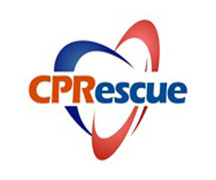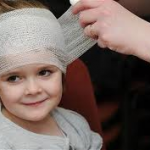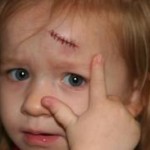Archive for Uncategorized
Do Redheads Bleed More?
Posted by: | CommentsFor centuries this was a widely held myth, that people with red hair tended to bleed more when cut, than those with darker hair pigments. In a recent study, by a group of surgeons in Wales, they found no physical evidence for this previously perceived anecdote.
Approximately 6% of the population in the U.S. have an inherited gene mutation that prevents the hair from darkening and keeps the skin tone fair. There is evidence that fair skin does increase the risk of skin cancer. Interestingly, there is additional evidence that people with red hair have a lower tolerance for pain. But, as far as any additional surgical risk due to excessive bleeding or coagulation problems, this seems an antiquated myth.

 SAN JOSE, CA July 26, 2013 — CPRescue announced today that it has signed a new contract with the California Department of Motor Vehicles (DMV). In this new 2-year agreement, CPRescue is to provide CPR and first aid training to the employees of the DMV, at their multiple locations throughout the state. This is the first contract CPRescue has landed with the California DMV. CPRescue has been providing CPR, first aid and AED training services for several California state agency’s since 2005.
SAN JOSE, CA July 26, 2013 — CPRescue announced today that it has signed a new contract with the California Department of Motor Vehicles (DMV). In this new 2-year agreement, CPRescue is to provide CPR and first aid training to the employees of the DMV, at their multiple locations throughout the state. This is the first contract CPRescue has landed with the California DMV. CPRescue has been providing CPR, first aid and AED training services for several California state agency’s since 2005.
CPRescue will provide the MEDIC First Aid™ Adult CPR, first aid and AED training program. This first aid training course prepares DMV employees to act and assist responsibly in case of an emergency such as a heart attack, a major accident, natural disaster, or a violent act in the workplace. Each DMV trainee will be instructed on how to perform CPR, use an AED, deal with choking and bleeding emergencies. Several additional first aid skills are also covered such as, how to treat burns, seizures, amputations, diabetic emergencies, strokes, snake and spider bites, just to name a few.
By performing and completing this safety training program, CPRescue will assist the Department of Motor Vehicles in fulfilling their OSHA safety training requirement 29 CFR-1910.151. This safety standard requires all businesses to provide safety training for their employees, “In the absence of an infirmary… persons shall be adequately trained to render first aid…”
The California Department of Motor Vehicles (DMV) is the state agency that registers motor vehicles and boats and issues driver’s licenses in the U.S. state of California. The DMV is part of the California Business, Transportation and Housing Agency. It is headquartered in Sacramento and operates local offices in nearly every part of the state.
Established in San Jose in 1997, CPRescue quickly became a leader as a CPR, first aid and AED training vendor, who provides onsite safety training to Corporations, Healthcare Providers (AHA BLS CPR), many in the Hospitality Industry and for licensed Childcare Providers (EMSA approved). Since then we have expanded our service areas to include all of Northern and Southern California. CPRescue is a Certified Small Business (Lic# 0030191). For additional information, please visit their website at www.cprescue.com, email at info@cprescue.com or call them at 1-888-313-2444.
Concussions
Posted by: | Comments Any blow to the head must be taken seriously. Actress Natasha Ricardson, who unfortunately died after receiving, which seemed to be a minor blow to the head. Concussions are basically a bruising of the brain and can have several degrees of seriousness. Some can be as simple as the victim experiencing some mild confusion. Others that are more serious, can have extended loss of consciousness with memory loss and coordination problems. In most cases, concussions will heal over time and do not cause longer term or permanent effects. Although repeated concussions can lead to a cumulative effect, which may cause permanent or longer term neurological problems.
Any blow to the head must be taken seriously. Actress Natasha Ricardson, who unfortunately died after receiving, which seemed to be a minor blow to the head. Concussions are basically a bruising of the brain and can have several degrees of seriousness. Some can be as simple as the victim experiencing some mild confusion. Others that are more serious, can have extended loss of consciousness with memory loss and coordination problems. In most cases, concussions will heal over time and do not cause longer term or permanent effects. Although repeated concussions can lead to a cumulative effect, which may cause permanent or longer term neurological problems.
Kids invariably hit their heads, many times, as they are growing-up. Running them to the hospital each time would be expensive and not necessary. If your child or any adult receives a blow to the head, do a quick and easy examination of the victim. If any of the following items are observed, call 911 immediately and keep the patient still and calm as you wait for help to come.
After receiving a blow to the head:
- The victim losses consciousness, no matter how short a time period.
- The victim experiences confusion.
- Nausea or vomiting.
- Blurred vision.
- Memory loss.
- Headache which seems to be getting worse.
- Repeating the same thing over and over (ie. asking what happened several times, even after you explained the occurrence).
- Unequal pupil size.
- The victims eyes unable (or skipping) to follow your finger, as you move it back and forth in front of their face.
- Complaining of neck or back pain.
If they do not experience any of these symptoms, some ice on the area can help control swelling and the uses of acetaminophen (Tylenol) or Ibiprofun (Motrin, Aleve) can help with any discomfort. When in doubt, always play if safe and have the individual seen by a physician.
Can Chocolate Make You Smarter
Posted by: | CommentsCocoa and chocolate are full of an antioxidant called flavonoids. Flavonoids have shown to enrich the flow of blood to your brain. This increased blood flow can help your brain function better. More blood flow has shown to increase the thinking ability of your brain and can be a benefit to aging adults.
Researchers in a recent study, compared the volume of chocolate consumed by each nation and compared it to the number of Nobel Prize winners. Surprisingly a strong correlation existed between the amount of chocolate each country consumed and the number of Nobel Prize winners. The more chocolate a nation ate, the more Noble Prize winners they had.
Now this study isn’t conclusive proof that the flavonoids in chocolate were the underlying factor in the increased number of Nobel laureates, but it is an interesting statistic. Studies have concluded that flavonoids can slow down and in some cases reverse the decline in thinking abilities that are usually associated to old age. These flavonoids can also be found in green tea and red wine.
So go ahead, enjoying that glass of red wine with a small bit of chocolate. Your helping your brain.
CPRescue Wins 2-Year Contract Extension with D.O.T.
Posted by: | Comments SACRAMENTO, CA — CPRescue announced its continuing relationship with the California Department of Transportation (DOT) by signing a new 2-year CPR and first aid training agreement. For the past 8 years, CPRescue has been providing the MEDIC First Aid Adult CPR and first aid training program for the Department of Transportation’s training division, at their Sacramento location.
SACRAMENTO, CA — CPRescue announced its continuing relationship with the California Department of Transportation (DOT) by signing a new 2-year CPR and first aid training agreement. For the past 8 years, CPRescue has been providing the MEDIC First Aid Adult CPR and first aid training program for the Department of Transportation’s training division, at their Sacramento location.
This first aid training prepares their staff to act and assist responsibly in case of a heart attack, a major accident, natural disaster, or a violent act in the workplace. Each trainee is introduced on how to perform CPR, use an AED, deal with choking and bleeding emergencies. Several additional first aid skills are also covered such as, how to treat burns, cuts, seizures, amputations, diabetic emergencies, strokes, snake and spider bites, just to name a few.
By completing this safety training, CPRescue helped the Department of Transportation fulfill the OSHA safety requirement 29 CFR-1910.151. This safety standard requires all businesses to provide safety training for their employees, “In the absence of an infirmary… persons shall be adequately trained to render first aid…”
CPRescue looks to continue and expand its relationship with the State of California, providing CPR and first aid training services to several of its Departmental Agency’s.
Established in 1997 in San Jose, CPRescue quickly became a leader as a CPR, first aid and AED training vendor for Corporations, Healthcare Providers (AHA BLS CPR), Hospitality Industry and for licensed Childcare Providers (EMSA approved). CPRescue provides onsite training classes, and is a Certified Small Business (Lic# 0030191). For additional information, please visit their website at www.cprescue.com, email at info@cprescue.com or call them at 1-888-313-2444.
Insect Bites That Are Poisonous
Posted by: | CommentsAs the days become longer and the weather warms, we begin to spend more time outdoors. So do caterpillars, bees, ticks, spiders and mosquitoes. The bites of these insects can range from being just a nuisance, to having a severe life threatening reaction. If you do experience a life threatening reactions to any substance, you should consult your doctor about obtaining an Epi-Pen.
Screens for doors and windows, as well as using repellents containing DEET, will help you avoid these creatures. Wear gloves working outdoors when lifting wood, bricks or other items that spiders like to hide under. Check yourself for bites and ticks after spending time in the outdoors in long grasses or in the wilderness areas.
Here are some of the insect bites that we should be concerned with:
 Puss Caterpillar Stings – Yes there is a Caterpillar that can be harmful to your health. This long haired Caterpillar has stingers hidden underneath their hairy body. When stung, a person will feel intense pain, develop a rash, accompanied by a fever, vomiting and severe muscle cramps. Remove stingers by using cellophane tape and seek medical attention.
Puss Caterpillar Stings – Yes there is a Caterpillar that can be harmful to your health. This long haired Caterpillar has stingers hidden underneath their hairy body. When stung, a person will feel intense pain, develop a rash, accompanied by a fever, vomiting and severe muscle cramps. Remove stingers by using cellophane tape and seek medical attention.
Ticks – Lyme disease and Rocky Mountain Spotted Fever are two diseases carried by ticks. Ticks like to attach themselves around the moist areas of the groin and armpits. It usually takes an attached tick up to 36 hours before the transmission of Lyme Disease. The first signs you will begin to see is a circular rash developing upon the skin.
Black Widows – Their bites can be painless or very painful. Black Widows can be identified by the red or orange hour glass marking on their undersides. Look for the fang marks or if you begin to suffer from severe muscle cramps, nausea, vomiting and seizures, seek out immediate medical attention. You will need administration of anti-venom treatments.
Brown Recluse – Another poisonous spider which has a red or dark brown color. This bite is usually painless though it will have severe consequences. The skin will redden and then turn white at the bite sight. A bull’s-eye blister will begin to form. Immediate medical care will be necessary.
Mosquitoes – Though their bites are usually just a nuisance with itching, mild reddening and swelling of the skin, but they can also spread the West Niles Virus and Dengue Disease. Again screens on windows and doors, the use of a insect repellent and wearing long sleeves and pants will reduce the opportunities to be bit. Also makes sure to not have any standing water around your house, such as in a wheel barrow, buckets or depressions around your yard.
Severe reaction may cause anaphylactic shock. Any swelling around the eyes, tongue, lips or throat. Any difficulty in breathing, shortness of breath, dizziness, severe cramping or the development of hives, you should get immediate medical attention. Call 9-1-1 or use an Epi-pen, if one is prescribed for you.
CPRescue Provides CPR and First Aid Training to United States Post Office (USPS)
Posted by: | CommentsLOS ANGELES, CA, July 06, 2013 /24-7PressRelease/ — CPRescue announced in late June 2013, that it has gone into contract with the United States Postal Service (USPS) to provide CPR and first aid training for their employees at the City of Industry location in the Los Angeles area. CPRescue is to provide training for employees on all three (3) work shifts. Though CPRescue has contracts with several California State Departments, this is the first time it has landed a Federal entity.
The training the USPS Emergency Response Team (ERT) received will help them to protect and assist other employees, in case of a natural disaster, a major accident or a violence incident. Each of these ERT members received training in many first aid skills sets such as how to treat burns, cuts, seizures, strokes, choking, heart attacks, poisonings and how to perform CPR.
By completing this safety training, CPRescue helped the United States Postal Service fulfill the Federal OSHA safety requirement 29 CFR-1910.151. This Federal safety standard requires all businesses to provide safety training for their employees, “In the absence of an infirmary, clinic, or hospital in near proximity to the workplace which is used for the treatment of all injured employees, a person or persons shall be adequately trained to render first aid. Adequate first aid supplies shall be readily available.”
CPRescue looks to continue and expand its relationship with the United States Postal Service in providing CPR and first aid training to their other California locations.
Established in 1997 in San Jose, CPRescue quickly became a leader as a CPR, first aid and AED training vendor for Businesses/Corporations, Healthcare Providers (AHA BLS CPR), in the Hospitality Industry and for licensed Childcare Providers (EMSA approved). Since then we have expanded our service areas to include all of Northern and Southern California. For further information, please visit our website at www.cprescue.com or call us at 1-888-313-2444.
Do You Need Stitches?
Posted by: | CommentsWhat type of cuts or wounds would require stitches for proper first aid?
Your first priority is to always stop any bleeding. Make sure your protected by wearing a set of gloves and use clean dressings. Start by applying direct pressure upon the wound site. Elevating the wound above the heart is no longer a recommended treatment for bleeding by the American Heart Association.
Clean the wound and remove any dirt or debris. Generally plain soap and water work best. Wounds should be addressed within 8 hours, though in certain situations stitches can be administered up to 24 hours. The longer the delay the higher probability of a bacterial infection, will set in. So it is best to get medical attention as soon as reasonably possible.
Now that the bleeding has stopped and the wound has been cleaned, let’s look for certain signs that would indicate sutures or stitches would be required. The following are wounds or cuts that most likely will need the assistance of stitches:
1. Any cut that is deep where muscle or yellow fatty tissue is visible.
2. Wounds 1 inch or longer in length.
3. Cuts around joints, where the movement of the joint would prevent proper healing.
4. Jagged or gaping wounds.
5. Torn sections with either an open flap or three sides torn away.
5. Cuts to the face or head.
The emergency room is well equipped to handle cuts and wounds. These doctors put in stitches several times a day and are well versed in the process, but cuts to the face should be treated by a plastic surgeon to reduce the possibility of excessive scaring.
Stitches can remain in place from 5 to 14 days depending upon the location of the wound. Always keep stitches dry for the first 24 hours to prevent infections. Afterward immediately dry the affected area after bathing. Clean your stitches twice a day and apply an antibiotic ointment. If pus, increased redness and swelling occur or if the wound begins to smell bad, the wound maybe infected and see your physician immediately.
Darkside of Sunscreen
Posted by: | CommentsA study by the CDC shows that 97% of all Americans are contaminated with a toxic chemical called oxybenzone (benzophenone-3, BP-3). Oxybenzone is an ingredient found in many of the most popular sunscreens. This chemical is primarily used to absorb UV-ultraviolet rays.
Oxybenzone is a derivative of benzophenone, which is known to attack DNA when illuminated. This organic compound penetrates into the skin and acts as a photosensitizer, where it increases the development of free radicals under illumination. These free radicals increase the pre-mature aging of the skin while also becoming a photocarcinogen.
Though at first glance this may seem a significant health hazard, Dr. Calafat of the CDC and the senior authors of the CDC study states, “the presence of a chemical in the body, at the levels that we saw, doesn’t mean that chemical is causing adverse health effects.” Also John Bailey, chief scientist of the Personal Care Products Council, a trade association representing sunscreen and other cosmetic manufacturers says, “these are very, very low levels, below levels that may be showing effects in animal or cell structure testing.
The FDA does not actually test or approve sunscreen products. It lets the industry monitor itself and acts as a penalizing or police force when a health hazard arises, which means that people have already become sick or suffered the ill effects of a product before any actions are taken.
What we do know is that UV radiation from the sun damages our skin and is the leading cause of skin cancer. Over one million new skin cancers were reported in 2007. It is prudent to wear some sort of protection when performing activities outdoors. The EWG suggests that mineral sunscreens have the best safety profile of today’s choices. They are stable in sunlight and do not appear to penetrate the skin. They offer UVA protection, which is sorely lacking in most of today’s sunscreen products.
Treating Jellyfish Stings
Posted by: | CommentsWith summer approaching and more activities at the beach, the chances increase of coming in contact with jellyfish. Jellyfish stings can cause immediate pain and burning for several hours. Raised, red welts develop along the site of the stings, which may look as if you have been hit with a whip. Unlike what you see on movies and television shows, urinating on jellyfish stings is not the recommend treatment. In fact, urinating upon the site can cause additional stings, bacterial infections and STDs.
Never rub the affected area with your unprotected hands. The remaining tentacles can attach to your hands and cause additional stings and pain. Don’t flush with fresh water, urine, gasoline or turpentine, this will stimulate the tentacles to release even more stings and poison.
It is suggested to use a solution of vinegar and warm water to the site to prevent further stings. If vinegar is not available, flush the effect area with copious amounts of salt water. Pick off the remaining tentacles with a stick or your hand protected by a towel or glove. If it is available, apply a lather of shaving cream or soap, or a paste of baking soda, flour, or talc, to the skin. The stinging cells will stick to the shaving cream or paste and can then be removed easily by scrapping off with the edge of a credit card. You might want to consider creating a beach first aid kit and add a small bottle of vinegar, a can of shaving cream and talc to your other first aid items.
Continue to closely observe the victim for any signs of a serious allergic reaction. Any swelling of the neck, face, tongue, developing hives and skin rashes or difficulty in breathing could be the beginning signs of anaphylactic shock and should be treated by a medical professional immediately.











